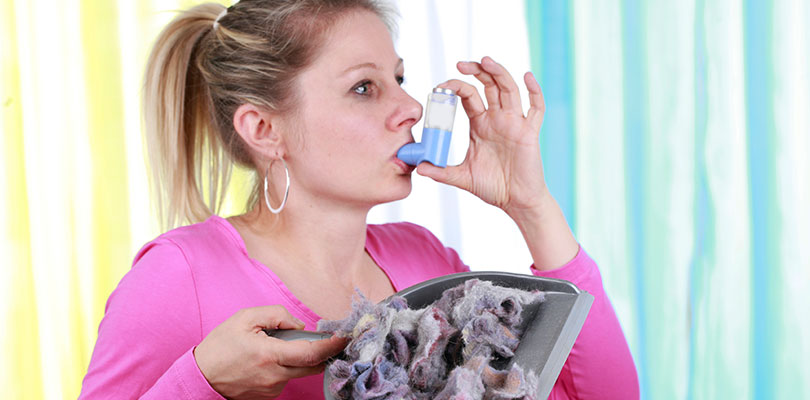Managing Indoor Allergens
In the indoor environment, there are five common allergens that worsen asthma symptoms: dust mites, cockroaches, pets, rodents and mold. Allergens from these sources bind to particles in the air and are breathed into the lungs, where they set off an excessive immune response.
While it is impossible to remove all allergens from the indoor environment, it is possible to reduce them for asthma proofing. The best method to reduce exposure to allergens is to remove the source of the allergen itself, but that is not always possible. Instead, reducing allergen levels in the environment requires a multifaceted approach.
1. Dust Mite Allergens
Dust mites live off the dead skin and dander of humans. They only survive in humid environments and they infest fabric and bedding. To reduce dust mites:
- Apply an allergen-proof cover to your mattress and pillow.
- Thoroughly vacuum the house regularly using a vacuum with a high efficiency particulate air (HEPA) filter.
- Wash sheets, pillowcases, blankets and mattress protectors at least weekly.
- Get rid of toys or wash them weekly.
- Dehumidify your environment using a dehumidifier or air conditioner.
If asthma is still poorly controlled with the above measures, you may need to also:
- Move to another bedroom.
- Use chemicals (ascaricides, like benzyl benzoate).
- Remove all wall-to-wall carpeting and replace with hard flooring.
Photo Credit: Shaiith / istockphoto.com
2. Rodent Allergens
Mice and rats produce high concentrations of scent proteins in their urine, which is a major cause of allergies. Almost all houses have mice allergens in the air, whether there is evidence of mice or not. Measures to reduce mice allergens include:
- Rodent control using an exterminator.
- Plug any access holes or cracks in the walls.
- Protect food.
- Clean regularly, using a vacuum cleaner with a HEPA filter.
- Use a HEPA room purifier.
Photo Credit: AndreyPopov / istockphoto.com
3. Cockroach Allergens
Cockroach allergens tend to attach to larger particles in the environment and don’t stay airborne for long. They also tend to be found in crevices, which makes them harder to eliminate. Methods to reduce cockroach allergens include:
- Use insecticides, particularly gel baits or bait traps rather than aerosolized products, which might aggravate asthma.
- Remove sources of food and grease.
- Use allergy linings on pillows, bedding and mattresses.
- Vacuum regularly with a vacuum cleaner containing a HEPA filter.
- Use a HEPA room air purifier.
Photo Credit: arvitalya / istockphoto.com
4. Pet Allergens
Pet allergens are carried on small particles and remain airborne. They also adhere to surfaces and clothing. For this reason, most homes and schools where there are no pets will have some pet allergens in them. Methods for reducing pet allergens include:
- The best method is to remove the pet.
- If removing the pet is not an option, try excluding the pet from the areas of sleeping and the main living areas.
- Use allergy linings on pillows, bedding and mattresses.
- Vacuum regularly using a vacuum with a HEPA filter.
- Use a HEPA room purifier.
- If asthma symptoms are not well controlled, consider replacing carpet with hard flooring.
Photo Credit: maewjpho / istockphoto.com
5. Mold
There are many different types of molds that cause problems. Molds prefer warm, moist environments. Methods to reduce mold allergens include:
- Keep the rooms dry using a dehumidifier or air conditioning.
- Use a HEPA room purifier.
- Reduce sources of moisture, such as water leaks.
- Regularly clean the bathroom, kitchen and laundry areas with mold cleaners.
